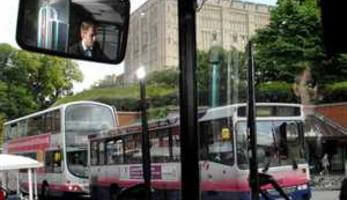Introducing a low-emission zone
Summary
Emissions from road traffic, especially buses, are a major contributor to poor air quality in the centre of Norwich.
Implementing sustainable mobility
Due to high levels of nitrogen dioxide pollution in the centre of Norwich, as well as problems with particulates and smoke, an air quality management area had already been declared prior to implementation. The area includes an important bus route and the removal or cancellation of bus services was not seen as an option, thus the measure aimed to find an alternative way to improve air quality and safeguard public health.
The development of a low-emission zone in the area was proposed as a solution to the problem. The zone was planned to cover one street on which traffic was limited to buses, taxis, delivery vehicles and emergency services with the aim of achieving the UK targets for annual emissions of nitrogen dioxide and particulates.
The four main tasks were to:
- design and introduce the low-emission zone following public consultation;
- introduce retro-fitting technology on buses, taxis and fire engines using the street;
- evaluate the effects of the zone, including the processes up to and after its introduction; and
- disseminate information about the zone through general (press) and targeted (bus drivers) awareness raising and communicate the results to other operators and local authorities along with advice on how to create low-emission zones and undertake complimentary retrofitting.
Progress
Following the creation of the low-emission zone the council regulated bus emissions and required that a certain percentage of the operator’s fleet meet set emissions criteria. As of April 2008, 40 percent of vehicles used for local bus services operating in the low-emission zone were required to comply with Euro 3 or higher exhaust emissions standard.
Supporting activities were also implemented in the zone, such as an engine switch-off traffic regulation order, and the offer of free eco-driving training sessions for bus drivers. To assist bus companies to meet the standards, Norfolk County Council made available grants for the cost of fitting pollution-reduction equipment.
Outcomes
The following results were achieved:
- compliance with European air pollution standards within the air quality management area;
- positive public opinion of the scheme;
- the take-up of liquefied petroleum gas within the taxi fleet; and
- bus fleet complying with Euro 3 or higher standard in central Norwich.








